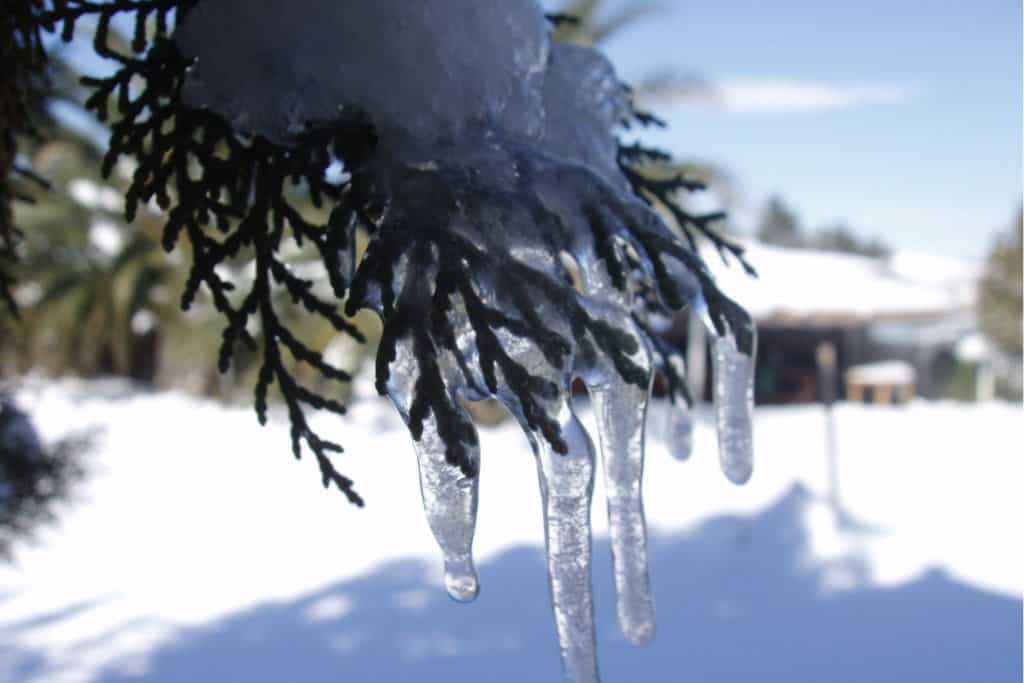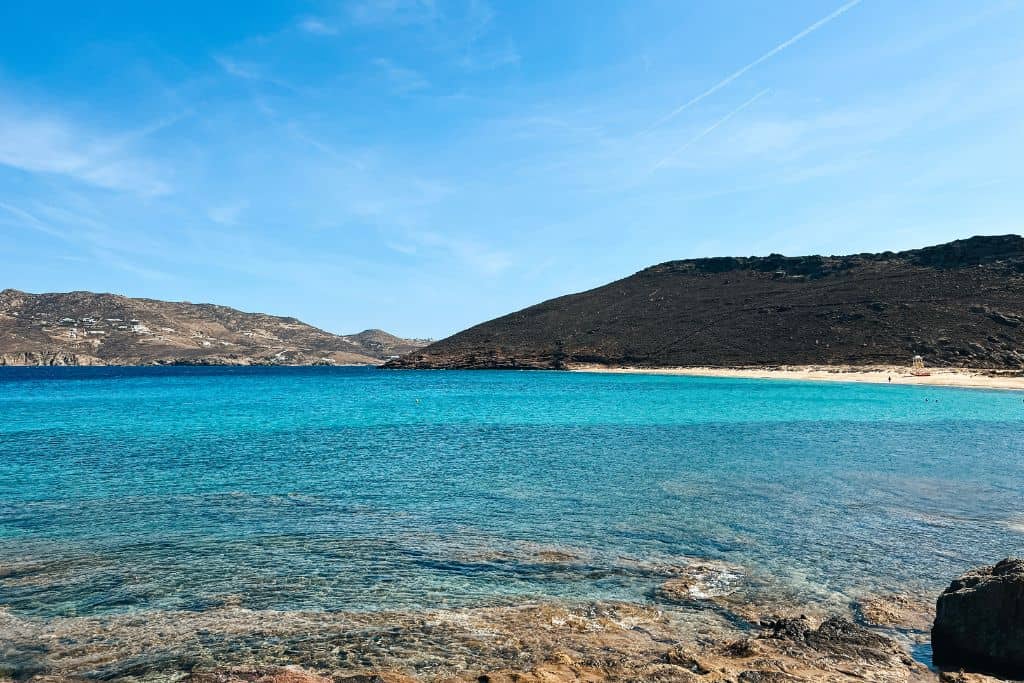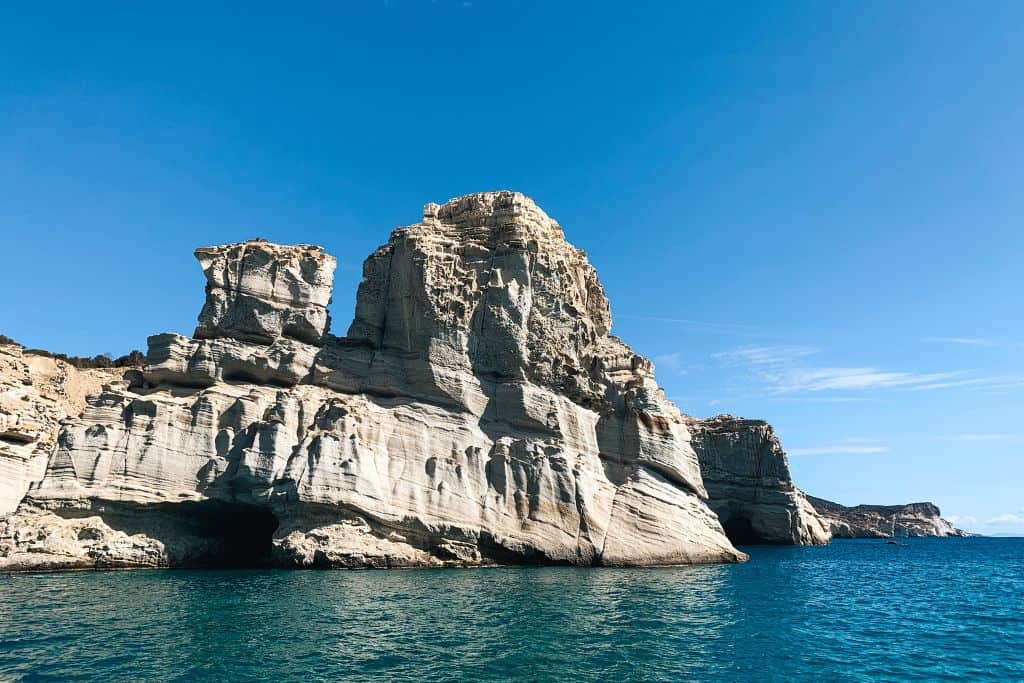Does It Snow In Greece? What To Know For Your Visit
Are you planning a trip to Greece and asking yourself, “Does it snow in Greece?”
After spending several months in Greece, I’ve experienced its different weather conditions. You’ve come to the right place if you’re wondering if it snows in the country.
To give a short answer, yes, it does snow in Greece. However, you won’t experience snowy conditions everywhere in the country!
Foremost, Greece is a sizable country, covering 50,950 square miles (131,960 square kilometers). In addition, it is split between a mainland and thousands of islands spread across several regions.
As a result, the frequency of snowfall will differ across the country’s regions. This post will offer some insight into the weather in Greece and how frequent snowfall may be.
Going On A Trip To Greece? Check Out These Resources!
🛌 Accommodations: I always use Booking.com for my lodging.
🚘 Car Rentals: To find the best prices, I use Discover Cars!
✈️ Flights: To find great flight prices, I check on Skyscanner.
📍Tours: I use Viator to find memorable experiences.
Does it Snow in Greece?
The quick answer to this quest is yes! While many may first think of Greece’s beaches and sunny islands, it does, in fact, snow. Snow in the country is most common in the north and mountainous areas, where winter can bring heavy snowfall.

These locations are also where the country’s best ski resorts are. In return, this provides the perfect destination for winter sports enthusiasts seeking a colder and snowy environment in Greece.
In winter, particularly in January, you can anticipate the heaviest snowy conditions and low temperatures in the north and elevated areas. The other regions in Greece, such as the islands, experience mild weather conditions and have a significantly lower chance of seeing snow.
How Often Does It Snow in Greece?
The frequency of snowfall in Greece depends on two main factors: the region and altitude. The areas where you are the most likely to see snow are in northern Greece and the mountains. In addition, snow in Greece can vary yearly, with certain winters bringing more significant snowfall than others.
Snowfall in these areas typically begins in mid-December and continues through February. Macedonia, Thessaly, and Thrace are some of the northern regions that experience the most snowfall during these months.
Unsurprisingly, the most popular ski resorts are also in these regions. The snowy conditions and colder temperatures create near-perfect winter landscapes, especially in January.

Conversely, as you move towards the southern mainland and the island regions, the likelihood of encountering snow decreases.
The winters are mild in destinations such as Athens and the Cycladic islands, and snowfall is not expected yearly. However, that doesn’t completely rule it out. In recent years, Athens and even Santorini have experienced snowfall.
What’s the Weather Like in Greece?
With its location in southeastern Europe, Greece experiences hot, dry summers and mild winters. Depending on the season, you can find hours of sunshine or a snowy escape. There’s something to suit any preference regarding the weather.
Next, we’ll examine what you can expect in the country during each season.
Greece in Winter
Greece’s winter spans from December to early March. In contrast with its pristine summers, Greece’s atmosphere is different from that of other countries due to the influence of colder temperatures.
Many may wonder, “Does it snow in Greece?” The answer is yes, especially in the country’s north, similar to snowfall in Italy. Avid skiers can benefit from the snowy playgrounds and choose from numerous ski resorts.
If you’re venturing around the Pindus mountain range or regions such as Macedonia, you may see a generous amount of snow. On the other hand, the southern mainland and islands undergo mild winter conditions. Rainy days occur the most during this time of the year.
How Cold is Greece in Winter?
Temperatures vary between regions. In the northern parts, such as Thessaloniki, they range from lows of 34°F (1°C) to highs of 56°F (13°C).
In Athens, you can expect temperatures from 42°F (6°C) to 62°F (17°C). Lastly, if you’re looking for an island destination like Santorini, there are slightly higher temperatures, from 49°F (9°C) to 63°F (17°C).
Greece in Spring
Spring occurs in Greece between late March and early June. These months witness the start of warmer temperatures and more sunny days.
While sea temperatures may still be cold for swimming, this is a beautiful time in Greece. Flowers begin blooming around the whitewashed streets of the islands, and the serene landscapes come to life.

Spring’s arrival means that the islands and more attractions begin to open as they prepare for the summer months. In addition, the gradual start of the season means fewer tourists will be at attractions and landmarks, such as the Acropolis in Athens.
An additional benefit of visiting during spring is lower costs. For example, prices in Mykonos during this time are drastically lower than in the summer months.
During spring, high and low temperatures range from 40°F (4°C) to 82°F (28°C) in Thessaloniki, 47°F (8°C) to 85°F (29°C) in Athens, and 53°F (6°C) to 80°F (12°C) in Santorini.
Greece in Summer
The summer season in Greece runs from late June through August. This is the best time to visit if you’re looking for the country’s hottest and most sunny days.
The temperatures during summer span from 64°F (18°C) to 90°F (32°C) in Thessaloniki, 67°F (19°C) to 92°F (33°C) in Athens, and 69°F (21°C) to 85°F (29°C) in Santorini.
As a relief from the heat, the islands such as Naxos and Mykonos benefit from cooling winds.
Greece’s weather throughout these months provides the ideal conditions for relaxing in the sun and other water activities. The many guaranteed sunny days are perfect for visiting historical sites and outdoor adventures.
👉Travel Tip: Heatwives are not uncommon in Greece during summer. Remember to remain hydrated, use sunscreen, and partake in other protections.
Summer also means the highest prices and most crowds during the year! However, opt for less touristy islands like Syros to avoid surging prices on islands like Mykonos.
Greece in Fall
The shift to Fall in Greece means the gradual decline of summer heat, providing a comfortable environment for outdoor activities. The sea is cooler but comfortable for swimming and numerous water sports.
Fall begins in September and lasts through November. Typical high and low temperatures during fall are 43°F (6°C) to 82°F (28°C) in Thessaloniki, 50°F (10°C) to 85°F (29°C) in Athens, and 55°F (13°C) to 80°F (27°C) in Santorini.

Like Spring, early fall is a great time to visit Greece, as you’ll benefit from lower costs and crowds. The islands and popular tourist destinations become quieter, providing easier access to sites and activities.
In addition, there are plenty of sunny days in the fall season, so you can still enjoy outdoor excursions and activities. Whether it’s an ATV tour or a flying dress photoshoot in Santorini, the weather conditions can be perfect!
What Is the Coldest Month in Greece?
As with many European countries, the coldest month in Greece is January. During this time, temperatures can drop significantly, especially in northern and mountainous areas.
January is also one of the months that sees the most snowfall in the northern regions. This is a great time to plan your Greece trip if you want to do any winter sports or simply want to see snow.
If you’re going to regions like Macedonia in Thrace, dress warm. Bringing layers will be a good idea, especially for the mountains.
Meanwhile, in the southern areas of Greece, the January climate will be milder. Nevertheless, January is still a cool month throughout the country.
Where Does it Snow in Greece?
As you’re probably aware at this point, the occurrence of snowfall in Greece depends on altitude and geographic region.
If you’re curious about specific locations where snow is common in Greece, continue reading for insights into snow patterns, ski resorts, and valuable tips!
1. Arachova
Arachova is a picturesque town located on Mount Parnassus’s slopes. This destination is well-known for its ski resorts and stunning winter landscape.
If you’re still wondering, “Does it snow in Greece?” Arachova definitively says yes! Against its backdrop of snowy peaks, Arachova is easily one of the most popular destinations in Greece for winter sports.
December through February are the most promising months to see snow in Arachova. During this time, you can see up to 4 inches (102 millimeters) of snow!
2. Metsovo
Situated in the northern region of Epirus, Metsovo is an additional snowy Greece destination to consider. This town is best known for its preserved stone-built houses, woven textiles, and metsovone cheese.

As you can probably guess, it’s also an ideal destination for skiing and other snowy activities. The winter months create a picture-perfect snowy landscape.
In Metsovo, the snow can reach levels up to 9 inches (229 millimeters), sometimes being more than that! Nevertheless, you’ll have no problem finding a day to ski here!
3. Meteora
Meteora is in the region of Thessaly and is around a 4-hour commute from Athens. It is a famous destination due to its stunning monasteries built on rock formations. The monasteries are a UNESCO World Heritage Site and are a must-see!

Snowfall in Meteora is not as high as in destinations like Arachova. However, during winter, the monasteries are still covered in a light blanket of snow.
December and January are the coldest months in Meteora and have the highest probability of seeing snow. Although the snowfall will most likely not even reach an inch, the site of the monasteries and surrounding landscape in the snow is beautiful!
4. Thessaloniki
As Greece’s second most populated city, Thessaloniki is a must-see in Macedonia. The city is known for its historic sites, culinary scene, and nightlife. It’s also home to the historic Paleochristian and Byzantine Monuments, which are UNESCO World Heritage Sites.
While Thessaloniki does see snow, it is very low compared to areas more north. If you want to catch a snowy day in the city, then December and January have the highest probability.
FAQs: Does it Snow in Greece?
I hope you now understand whether it snows in Greece and where you can see snow. Next, we’ll look at commonly asked questions about visiting Greece in winter.
Does it Snow in Athens?
Athens, the popular capital of Greece, usually doesn’t see much snow. While snow chances are not anticipated for the historical capital, they have happened in recent years. As you can imagine, it always makes headlines!
View the Acropolis and other historic sites if you are in Athens during a snowy day. This is a one-of-a-kind sight!
Does it Snow in Crete?
As Greece’s largest island, Crete is home to a diverse landscape with mountains, pristine beaches, and charming towns. Crete is also popular for its archaeological sites, culinary scenes, and nature.
As an island with a mild climate, snowfall is rare along the coast and cities in Crete. However, the island has several mountains, such as Ida and Lefka Ori, where snowfall can occur. There, you’ll have a chance to see beautiful white-capped mountains.
Does it Snow in Santorini?
Santorini is a crown jewel in Greece due to its captivating sunsets, unique beaches, picturesque white buildings, and dome churches. Despite its pros, this isn’t the place to be if you’re looking for a snowy adventure.

Snowfall is very rare in Santorini, occurring randomly around once every decade. 2022 was the most recent year that the island witnessed snowfall, and it was quite a surprise! Even when this happened, it didn’t last long due to the mild climate.
Does it Snow in Thessaloniki?
As mentioned earlier, the probability of snowfall in Thessaloniki is far lower than in other northern regions. However, the city can still experience a few snowy days during the winter months.
Landmarks such as the White Tower are a stunning sight when it snows!
Does Greece Have Ski Resorts?
Is having a ski vacation in Greece one of your dreams? Well, if so, then you’re in luck!
While Greece is most widely known for its stunning islands and near-perfect Mediterranean climate, this may not be a top choice for winter sports enthusiasts.
However, the country has several ski resorts in its northern areas. You’ll find the most options in regions including Macedonia, Epirus, and Thrace.
The biggest and most popular ski resort in Greece is Parnassos Ski Resort on Mount Parnassos. This resort offers a variety of slopes for various skill levels and stunning views of the surrounding winter landscape.
Even though the ski resorts in Greece do not attract the same appeal as those in Switzerland or Austria, they are fun winter activities. In addition to the thrills of snowboarding, you can enjoy the warmth of Greek hospitality and explore nearby historical sites during winter trips.
To Sum Up: Does It Snow in Greece?
Even with the cooler temperatures and the possibility of snow in specific areas, a winter visit to Greece is a great choice! There are numerous benefits, including lower accommodation costs, fewer crowds, and discounts on experiences.
There are many ski resorts in the northern regions of the mainland. This is an excellent option for a snowy escape during your Greece trip.
While snow is rare in the islands, there have been cases of snowfall in several, including Santorini and Corfu. Ensure that you are safe if ever caught in the snow by driving carefully and wearing warmer clothes.
After reading this post, I hope you know the answer to “Does it snow in Greece?”. If you’re still unsure, the answer is yes! I hope you better understand what to expect and whether Greece is worth a visit during winter.
Enjoy your time in Greece!







